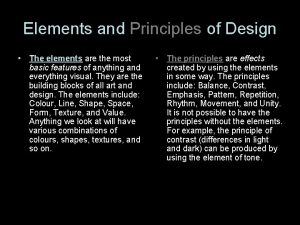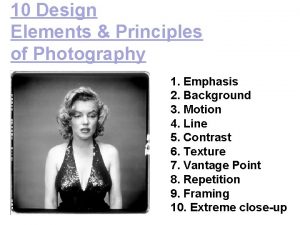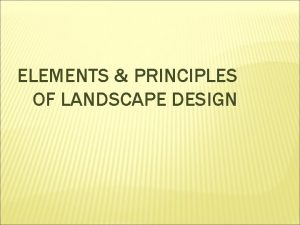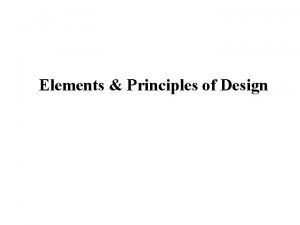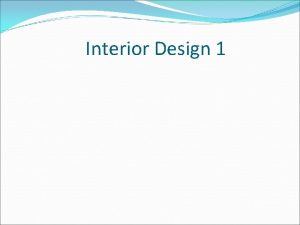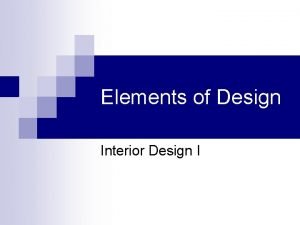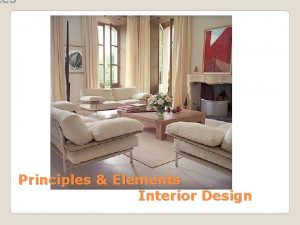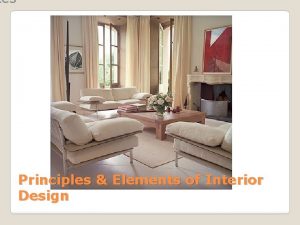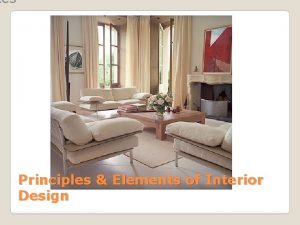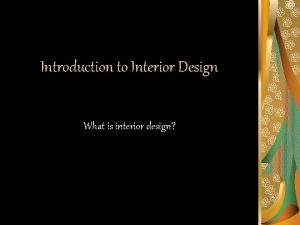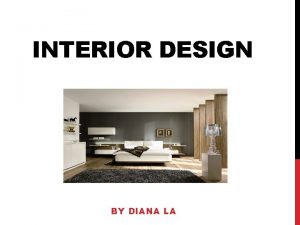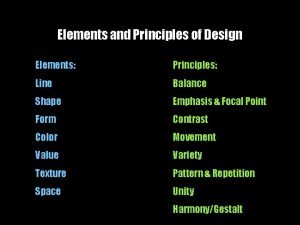Principles of Design Interior Design Elements and Principles













- Slides: 13

Principles of Design Interior Design

Elements and Principles Elements= Tools used in design Principles= Rules used in design Color Proportion Line/Shape Rhythm Texture Balance Form Emphasis

PROPORTION Elements seem to be an appropriate size for the space they fill. Think of the size of furniture and accessories, You want balance • Large furniture in small room takes up too much space • Large sofa, small coffee table • Small sofa, Large coffee table • Decorations appropriate to what they are placed on

RHYTHM When you look around a room these objects/designs leads eye smoothly from one feature to another Examples are Repetition, Opposition, Gradation, and Transition

Repetition Repeating color, line, form, or texture Ex. Same wood in the furniture all oak, cherry etc

Opposition Rhythm is formed by lines meeting at right angles Ex. Windows, picture frames, pillows

Gradation Change in color from light to dark from furniture to walls to floor or in form from small to large Light to Dark Thin to Thick Small to Large

Transition Carries eye over architectural feature or piece of furniture Ex curve in furniture provides transition between windows

BALANCE Symmetrical Asymmetrical Formal balance- imagine Informal balancea line divides the room, various size of furniture & design are accessories however its mirror images of the balanced within the other room with either a lot of little things or a few large items

Symmetrical or Asymmetrical

Symmetrical or Asymmetrical Symmetrical

Symmetrical or Asymmetrical Symmetrical

EMPHASIS �Center of interest in a room or focal point �Eyes are drawn to one feature: fireplace, painting, piece of furniture �Point of emphasis should dominate, but shouldn’t overpower room �Blends well with other objects
 Principles of interior design ppt
Principles of interior design ppt Characteristics of decorative design
Characteristics of decorative design Design elements hair
Design elements hair List the five elements of hair design
List the five elements of hair design Radial balance in floral design
Radial balance in floral design Principles and elements of design chart
Principles and elements of design chart Has an immediate and profound effect on a design
Has an immediate and profound effect on a design Line shape form color texture space
Line shape form color texture space Ci element
Ci element Elements and principles of design space
Elements and principles of design space Emphasis in photography
Emphasis in photography Gradated rhythm
Gradated rhythm Elements and principles of landscape design
Elements and principles of landscape design What are the elements and principles of design
What are the elements and principles of design









